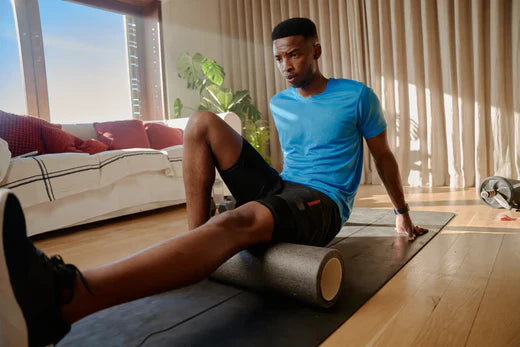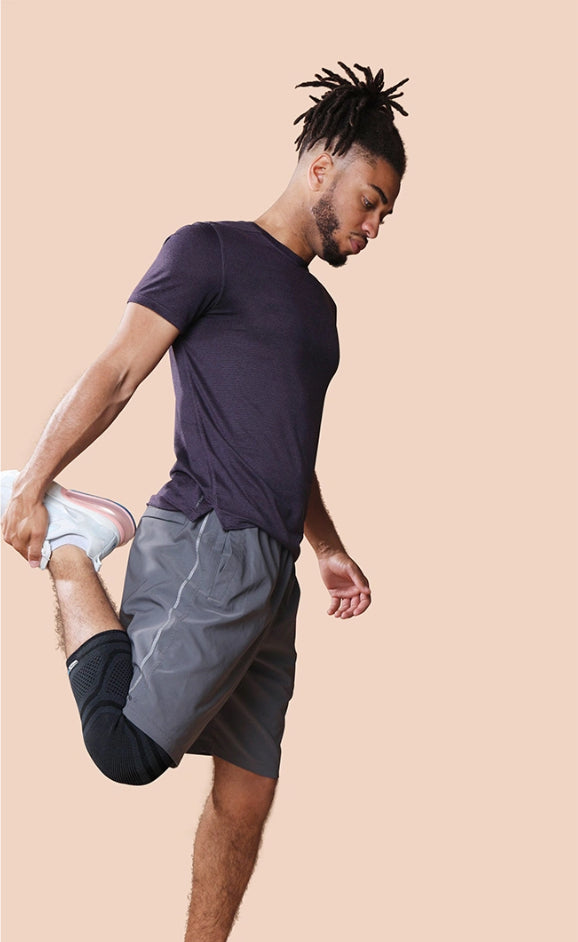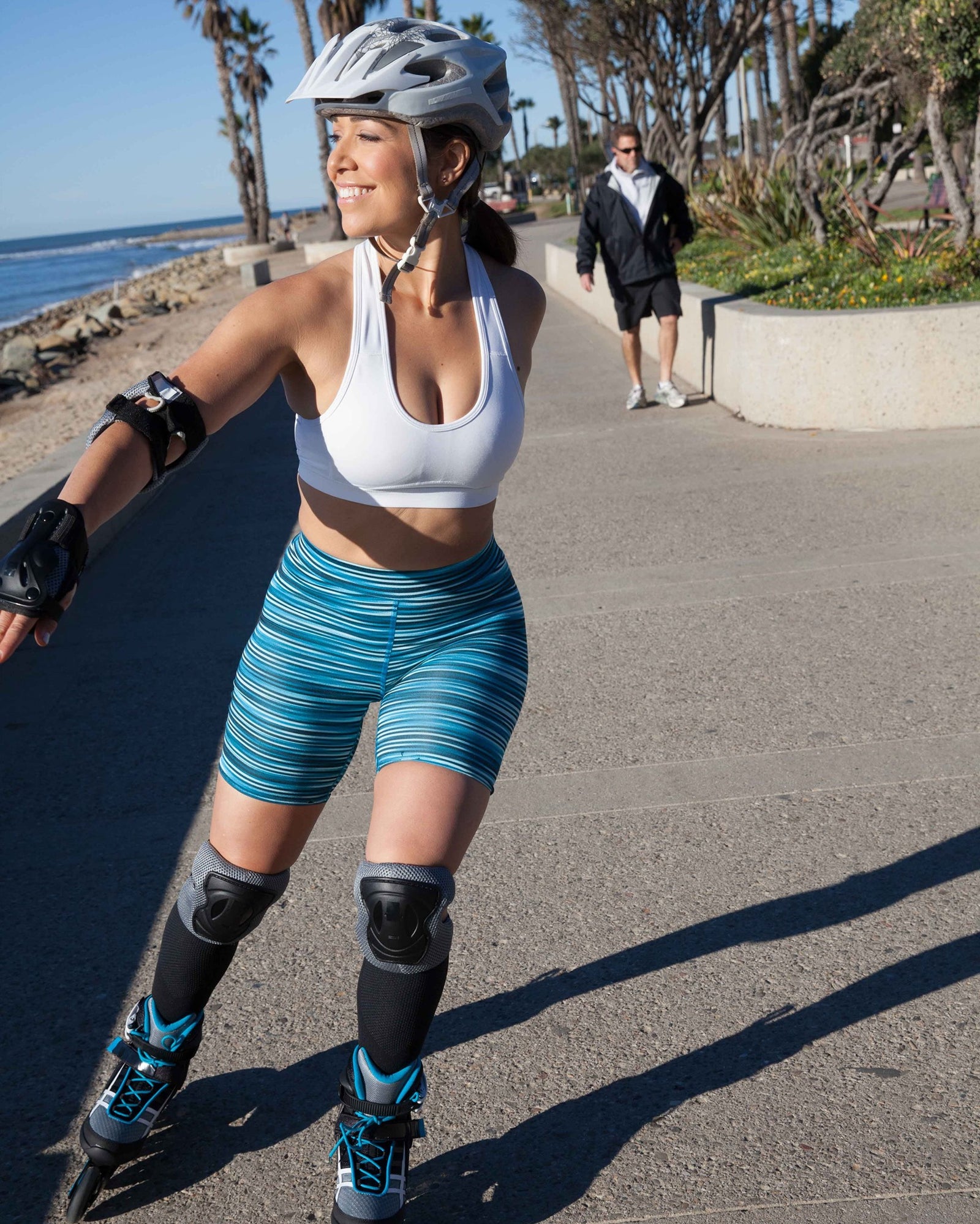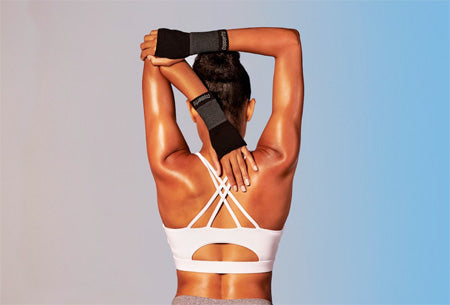
Movement is a natural part of life, and your body's range of motion plays a significant role in every activity you perform, from simple daily tasks to more strenuous activities. A full range of motion means a joint can move freely and fully, enabling you to perform tasks without discomfort or tension.
Limited range of motion, however, is when a joint doesn't move as freely as it should, possibly due to an injury or condition like osteoarthritis. Range of Motion exercises, also known as ROM exercises, are a vital part of maintaining your body's flexibility and mobility.
These exercises are designed to keep your joints moving smoothly and reduce discomfort from stiffness or tension. ROM exercises are a fundamental part of healthcare, regularly used to support recovery and boost overall well-being.
Looking for ways to support your range of motion and keep your body feeling its best? Let’s dive into it.
What Is a Range of Motion?
Think about the act of lifting your hands above your head, stretching out to touch your toes, or how deep you can settle into a split. All of these are dependent on your range of motion. When your joints move freely and fully, it means you are experiencing a full range of motion.
Joint movement relies heavily on the health and function of various body parts, including ligaments, connective tissue, and muscles. Ligaments are tough, flexible tissues that connect bones to other bones, while connective tissue binds, supports, and separates different types of tissues and organs in the body. Muscles allow your body to move, and keeping them flexible and strong can support an optimal range of motion.
Range of motion can vary from person to person and can change throughout your life. For instance, it’s common for our range of motion to decrease with age. Injury may also limit your range of motion, while stretching can help increase it.
ROM exercises can have a crucial role in supporting joint function and helping you maintain a full range of motion. There are three main types of ROM exercises: active, passive, and active-assistive. Each type has a unique role in enhancing your body’s mobility and aiding in your wellness journey.
What Are Active Range of Motion Exercises?
Active range of motion exercises are movements you perform independently — without outside help — to improve flexibility and strength. These exercises can target various parts of the body, such as the triceps, hamstring, knee joint, and shoulder. For instance, tricep stretches and shoulder rolls can be simple yet effective exercises to enhance your active ROM.
Active ROM exercises can fit into your warm-up and cool-down routines. A warm-up prepares your body for the activity ahead, reducing the risk of injury and making the exercises more effective.
These exercises not only improve flexibility but also help improve balance and muscle strength. Regularly incorporating active ROM exercises into your routine can support your body's natural ability to move and function, making daily activities easier and more enjoyable. Remember, every movement counts when it comes to maintaining an active and healthy lifestyle.
4 Active Range of Motion Exercises To Try
Let's dive into some active range of motion exercises you can incorporate into your routine. These exercises can help you improve flexibility, muscle strength, and overall bodily function.
1. Shoulder Rolls
Shoulder rolls are a simple yet effective way to enhance the range of motion in your shoulders. Start by standing or sitting upright, then slowly roll your shoulders up, back, and down in a circular motion.
Do this for about 10 repetitions, then reverse the direction. This exercise is beneficial for alleviating tension in the shoulders and can be done anytime, anywhere — whether you're on a work break or watching TV.
2. Hamstring Stretch
The hamstring stretch targets the muscles at the back of your thigh. Begin by standing and bending one knee while keeping the other leg straight in front of you.
Gently lean forward until you feel a stretch in the hamstring of your straight leg. Hold for 20 to 30 seconds and switch sides. This exercise helps improve flexibility and reduces the risk of discomfort in the lower body. It's a great exercise to do after a walk or run.
3. Tricep Stretch
The tricep stretch is beneficial for the muscles at the back of your upper arm. Raise one arm overhead, bend it at the elbow, and reach your hand down towards the middle of your back.
With your other hand, gently press the elbow of the raised arm until you feel a stretch in your tricep. Hold for 20 to 30 seconds, and then switch arms. This exercise is perfect after any activity that involves your arms, like lifting or pushing.
4. Knee Extension
Knee extensions are great for improving the range of motion in your knee joint. Sit on a chair with your feet flat on the floor. Slowly extend one leg out in front of you as straight as possible, then lower it back down.
Repeat this 10 times, then switch to the other leg. This exercise can help strengthen your knee and make activities like climbing stairs or standing from a seated position easier.
What Are Passive Range of Motion Exercises?
Passive range of motion exercises involve someone else moving your body part for you, such as a healthcare provider or physical therapist. These exercises are typically used when an individual has limited mobility or is unable to move a body part due to an injury or condition.
Passive ROM exercises are beneficial for maintaining or improving joint flexibility, reducing stiffness, and promoting better blood flow to the affected area. They can also help prevent contractures, which are the permanent shortening of a muscle or joint.
A healthcare provider or physical therapist plays a crucial role in passive ROM exercises. They ensure the exercises are done correctly and safely, providing the right amount of pressure and movement to avoid causing further discomfort or injury.
Examples of passive ROM exercises can include leg lifts or arm raises, performed by the therapist while the individual is in a relaxed state. Remember, these exercises should always be performed under the supervision of a healthcare provider to ensure effectiveness and safety. It's all about working together to help your body function at its best.
4 Passive Range of Motion Exercises To Try
Now, let's look at some passive range of motion exercises that can be performed with the help of a healthcare provider or physical therapist.
1. Leg Lifts
Leg lifts are a great way to improve flexibility and strength in your legs. While you're lying down, your therapist will hold your leg at the thigh and gently lift it upward while keeping the knee straight. This exercise can help enhance the range of motion in your hip and knee joints.
2. Arm Raises
Arm raises are beneficial for increasing shoulder mobility. While you're seated or lying down, your therapist will hold your arm and slowly raise it above your head and then lower it back down. This can help reduce tension and improve flexibility in your shoulder.
3. Ankle Bends
Ankle bends can enhance mobility in your ankle joint. While you're seated or lying down, your therapist will hold your foot and gently bend your ankle up and down. This exercise can help improve flexibility and reduce discomfort.
4. Wrist Flex and Extend
Wrist exercises can improve the range of motion in your wrists. Your therapist will gently flex and extend your wrist, helping to reduce stiffness and improve flexibility.
Active-Assistive Range of Motion Exercises (AAROM)
Active-assistive range of motion exercises (AAROM) are a combination of active and passive exercises. These exercises are beneficial when you can move a body part but need some assistance to do so.
AAROM exercises can help bridge the gap between active and passive exercises, making them a crucial part of recovery and rehabilitation. Examples of AAROM exercises include assisted leg lifts or arm raises, where you contribute to the movement with the help of a therapist.
How Else Can You Support Your Range of Motion?
Aside from the exercises mentioned, there are other ways to support your range of motion. Regular physical therapy sessions can significantly help, especially if you have limited mobility due to an injury or condition. Physical therapists can provide a personalized exercise plan that safely and effectively improves your ROM.
Technology also plays a role in supporting ROM. Various apps can guide you through ROM exercises, allowing you to schedule reminders to practice your exercises, track changes in your range of motion, and offer tips to help you perform each exercise correctly.
Compression gear such as knee sleeves and elbow sleeves can also support your range of motion. The gentle compression provided by these sleeves and wraps supports healthy circulation, carrying oxygen and nutrients to the area to help ease muscle and joint discomfort and support recovery.
At Copper Fit, our flexible and breathable compression gear is designed to be worn during activity or recovery to support blood flow and encourage proper form, helping to maintain your range of motion.
So, whether you're lifting weights, hitting the track, doing ROM exercise, or simply going about your daily activities, compression sleeves can provide the support your body needs to keep moving.
The Bottom Line
Range of Motion exercises, whether active, passive, or active-assistive, play a crucial role in maintaining joint flexibility and easing discomfort. Incorporating these exercises into your routine can enhance your mobility and help you stay active.
Remember, professional guidance is key in performing these exercises correctly, especially if you are recovering from an injury or experiencing a limited range of motion.
And for added support, explore our full range of supportive gear at Copper Fit. Our products are designed to help you move comfortably and confidently, every day.
Sources:
What Range of Motion Is—and How to Increase It | HSS
Age-related mobility loss is joint-specific: an analysis from 6,000 Flexitest results | PMC
Why mobility should be a key part of your fitness routine | National Geographic





